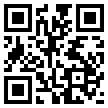![]()
GET THE APP VIA

or
DOWNLOAD TO ENJOY $5 OFF (PROMO CODE: TAKE5OFF) YOUR FIRST PURCHASE. T&C APPLIES
Discover the full benefits of the Eu Yan Sang Singapore app!
![]()

DOWNLOAD TO ENJOY $5 OFF (PROMO CODE: TAKE5OFF) YOUR FIRST PURCHASE. T&C APPLIES
Discover the full benefits of the Eu Yan Sang Singapore app!